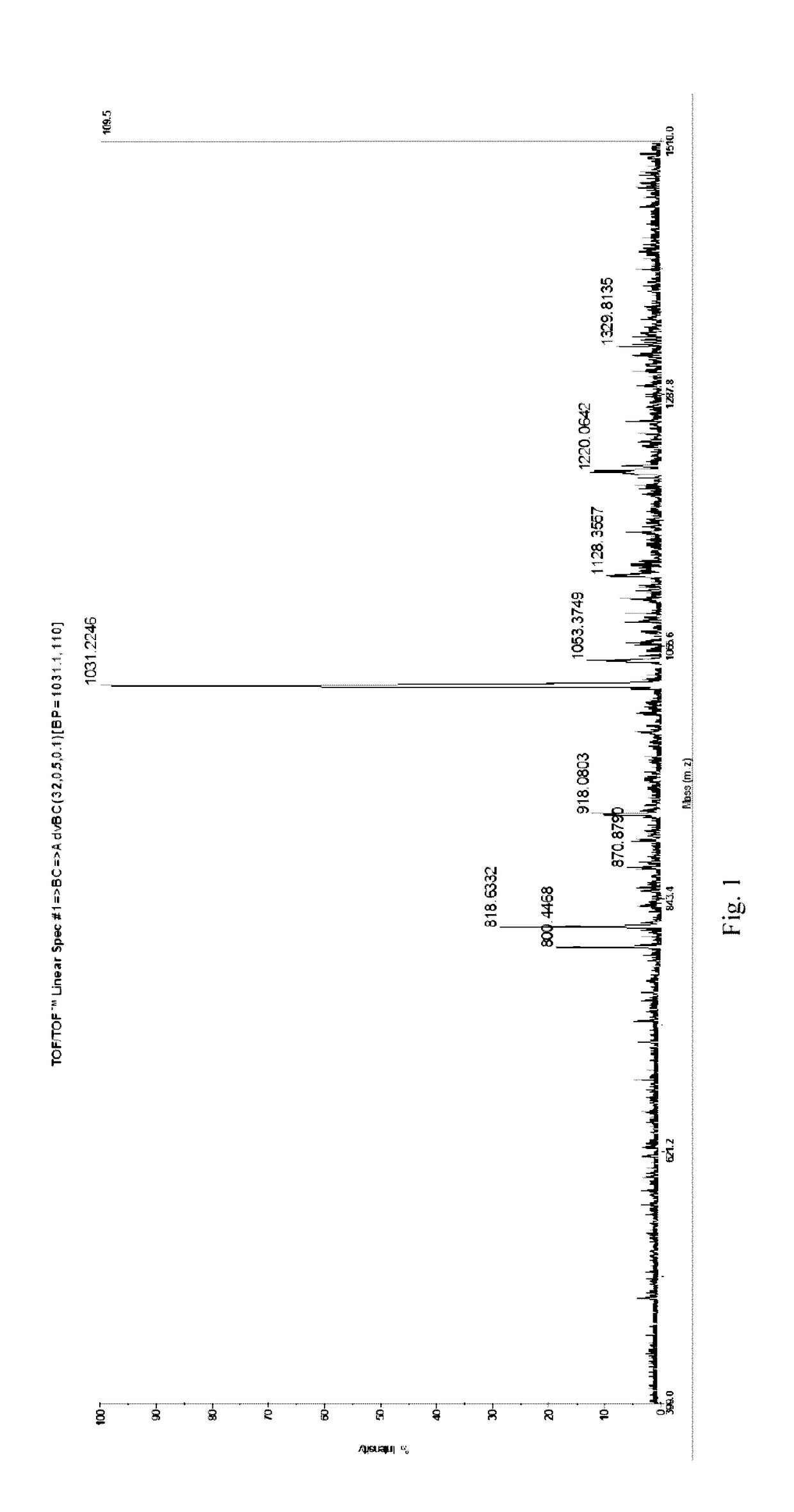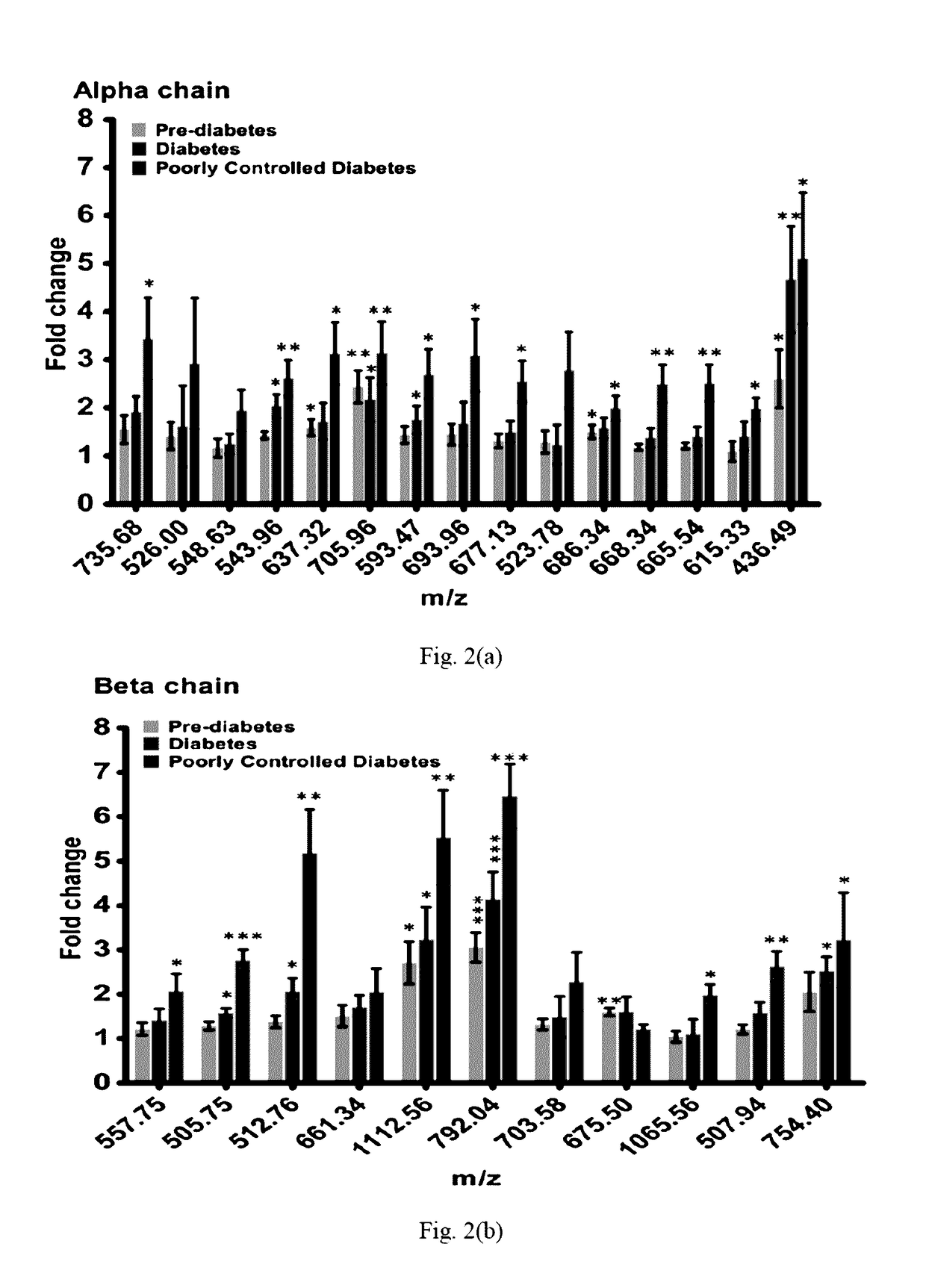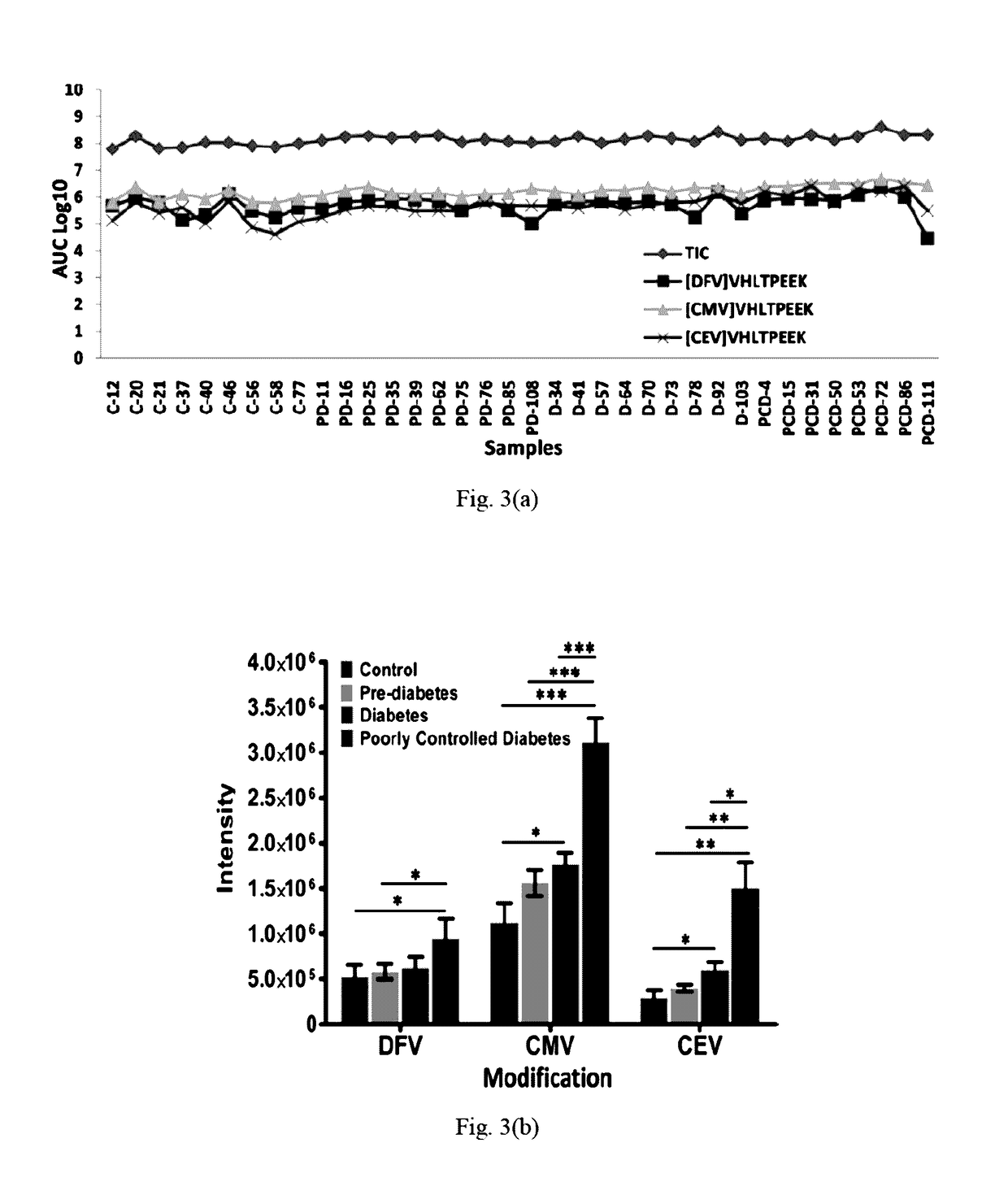Method for identifying and quantifying carboxyethyl valine modified haemoglobin
- Summary
- Abstract
- Description
- Claims
- Application Information
AI Technical Summary
Benefits of technology
Problems solved by technology
Method used
Image
Examples
example 1
Construction of Diagnostic Ion Library
(i) Synthesis of AGE Modified Haemoglobin by In-Vitro Methods
[0078](a) Haemoglobin Extraction[0079]By using heparin-coated capillary tube, the blood was collected from retro-orbital vascular plexus of a subject. The blood was dispensed in tubes containing aprotinin and mixed within the same capillary tube and later capped. The blood was further mixed after capping followed by centrifugation at 3000 rpm for 15 min. The erythrocytes in the lower layer were washed three times with saline buffer and then stored at −80° C. until use. A volume of 25 μl of erythrocyte was added to a solution of 20 μl of 0.1% Rapigest (in 50 mM ammonium bicarbonate buffer pH—8.3) and 15 μl of 50 mM ammonium bicarbonate buffer pH—8.3. This mixture was intermittently vortexed for about 30 minutes in freezing conditions, followed by centrifugation at 17000 rpm for 60 minutes. The supernatant was collected and centrifugation was repeated followed by protein estimation by Br...
example 2
Solid Phase Synthesis of CMV-Containing Octapeptide COOH—CH2-VHLTPEEK-OH
[0094]The protected amino acids (Pentafluorophenyl Pfp esters) were purchased from NovaBiochem. All solvents used during the synthesis of peptides were of peptide synthesis grade and for HPLC, of HPLC grade. The peptide sequence was synthesised following standard Fmoc chemistry on Wang resin. Synthesis was carried out manually. Fmoc group was deprotected by using a solution of 20% piperidine in DMF. Coupling reactions were performed by using 3 equivalents of each amino acid, HOBt and DIPEA (N,N-Diisopropylethylamine) in DMF for 6 h. Successive deprotection and coupling and washing steps were carried out in continuous cycles. Deprotection and coupling reactions were monitored by Kaiser Test. For alkylation of valine on solid support, deprotection of Fmoc followed by coupling reaction with chloroacetic acid in presence of DIPEA was carried out. For this, 3 equivalents each of DIPEA and chloroacetic acid were used....
example 3
Cleavage and Purification of Peptide
[0095]After synthesis of the desired peptide, cleavage from the solid support (Wang resin) was achieved by treating with 50% TFA in DCM for 2 h. After 2 h, the reaction mixture was filtered through a sintered funnel and the resin, washed with TFA. The peptide was precipitated in cold diethyl ether. The peptide was purified by RP-HPLC using an increasing gradient of acetonitrile in water containing 0.1% TFA, and characterized by MALDI-ToF mass spectrometric analysis. The MALDI-ToF spectrum of the purified peptide is shown in FIG. 1.
Advantages of the Invention
[0096]The present method provides qualitative and quantitative information for identification of glycation sites including carboxyethylated sites;[0097]The method improves existing glycated level diagnostic strategies;[0098]The present method can be employed to estimate glycated hemoglobin levels in patients with hemodialysis.[0099]On quantifying the peptide content, a long term diabetic can mo...
PUM
 Login to View More
Login to View More Abstract
Description
Claims
Application Information
 Login to View More
Login to View More - R&D
- Intellectual Property
- Life Sciences
- Materials
- Tech Scout
- Unparalleled Data Quality
- Higher Quality Content
- 60% Fewer Hallucinations
Browse by: Latest US Patents, China's latest patents, Technical Efficacy Thesaurus, Application Domain, Technology Topic, Popular Technical Reports.
© 2025 PatSnap. All rights reserved.Legal|Privacy policy|Modern Slavery Act Transparency Statement|Sitemap|About US| Contact US: help@patsnap.com



